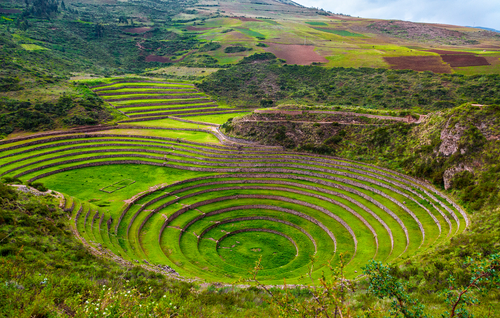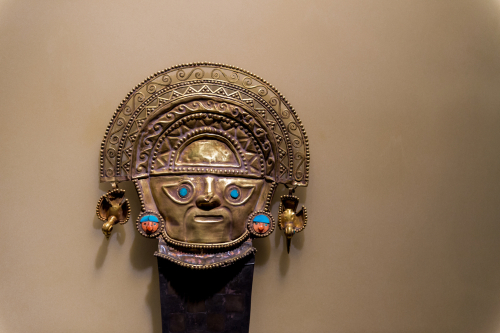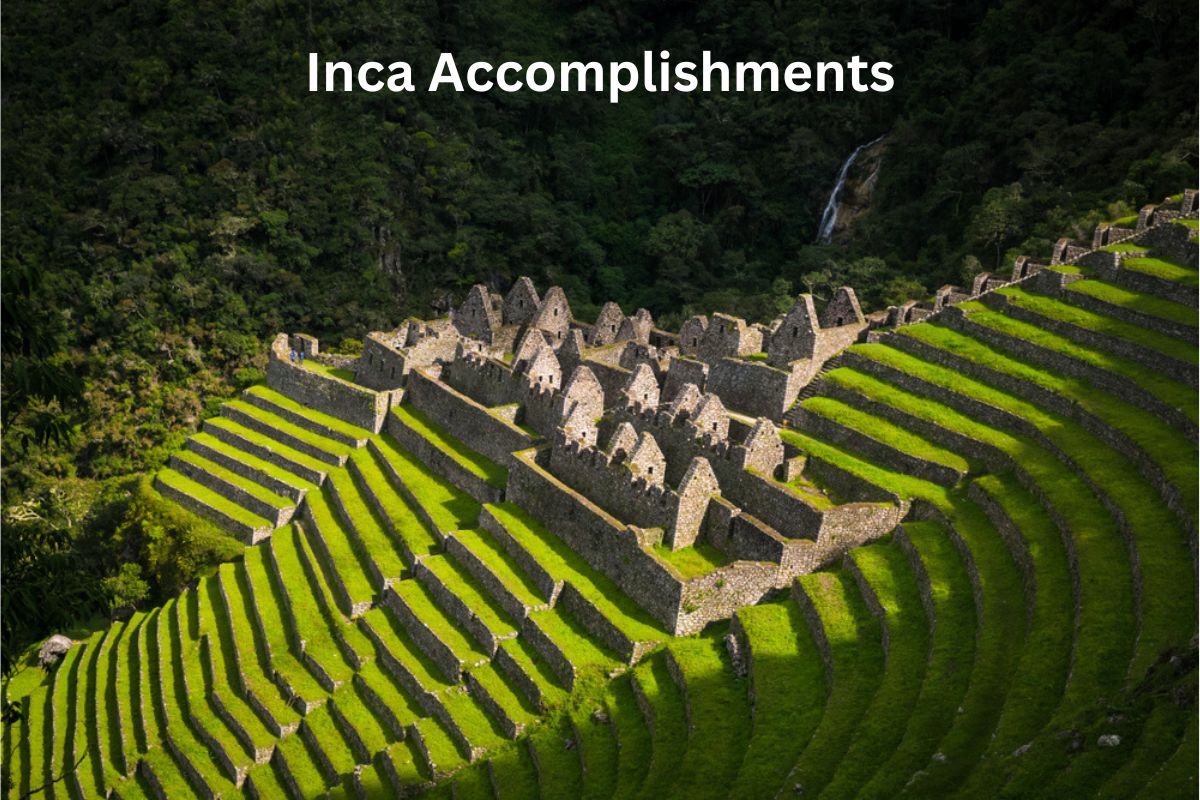The Inca Empire, one of the most remarkable civilizations in history, thrived in the Andean region of South America from the early 15th century until the Spanish conquest in the 16th century.
Renowned for their engineering ingenuity, the Incas left behind a legacy of extraordinary achievements that continue to captivate the world today.
From their vast road system to sophisticated agricultural techniques and awe-inspiring stone architecture, the Inca civilization’s accomplishments shaped their society and left a lasting impact on the region’s history and culture.
This brief intro provides a glimpse into the fascinating world of the Inca Empire and their impressive contributions to human civilization.
Accomplishments of the Incas
1. Extensive road system
The Inca Empire is famous for its remarkable network of roads, known as the “Qhapaq Ñan” or the Royal Road.
Covering approximately 25,000 miles (40,000 kilometers), these roads connected the different regions of the empire, spanning the modern-day countries of Peru, Ecuador, Bolivia, Chile, and parts of Colombia and Argentina.
Also Read: Facts About the Incas
The roads were carefully constructed with a combination of flat pavement, steps, and bridges, adapting to the diverse and challenging terrain of the Andes Mountains and the coastal plains.
They facilitated efficient communication, trade, and the movement of troops and officials across the vast empire. Along the roads, there were tambos (waystations) where travelers could rest, get food, and exchange information.

2. Ingenious agricultural techniques
Inca agriculture was highly sophisticated and adapted to the diverse climates and landscapes of their empire. One of their most significant achievements was the construction of agricultural terraces.
Also Read: Timeline of the Incas
By cutting flat platforms into the mountain slopes and using retaining walls, they created terraces that allowed them to cultivate crops at different altitudes and take advantage of various microclimates.
This ingenious technique increased agricultural productivity and helped support a large population. The Incas also used irrigation systems, such as canals and aqueducts, to distribute water to their farmlands, ensuring stable and reliable crop yields.
3. Advanced stone architecture
The Inca civilization was known for its impressive stone architecture, characterized by precisely cut stones that fit together seamlessly, without the use of mortar.
Their most iconic example is Machu Picchu, the awe-inspiring citadel built on a mountain ridge. The stones used in Machu Picchu and other structures were so precisely cut that even today, it is challenging to slide a piece of paper between them.
This precision in stonework allowed their buildings to withstand earthquakes and other natural disasters. Additionally, the Incas constructed impressive fortresses like Sacsayhuaman near the city of Cusco, showcasing their engineering prowess and military strategy.
4. Masterful stonework
Inca stonework is considered one of the most remarkable achievements of their civilization. The Incas used a technique known as “ashlar masonry,” where they cut stones to fit perfectly together without the use of mortar.
The precision and skill in their stonework are evident in the construction of walls, temples, palaces, and other structures.
The stones were carefully shaped to interlock tightly, creating stable and durable constructions. This technique allowed their buildings to withstand the test of time and the harsh environmental conditions of the Andean region, including earthquakes.
One of the most famous examples of Inca masterful stonework is the 12-angled stone in Cusco, Peru. The stone has twelve sides, each with a precise angle that fits perfectly with the neighboring stones, displaying the Inca’s exceptional craftsmanship and engineering expertise.

5. Sophisticated water management
The Incas were highly skilled at managing water resources, which was crucial for their agricultural success and the sustenance of their population. They developed elaborate systems of canals, aqueducts, and irrigation channels to direct water from mountain springs and rivers to farmlands and urban centers.
Inca engineers ingeniously designed these water management systems to follow the natural contours of the landscape.
They used gravity to transport water over long distances, often employing underground channels to prevent water loss due to evaporation or surface leakage. The intricate water management infrastructure played a vital role in supporting their agricultural terraces and maintaining a stable food supply for the empire’s inhabitants.
6. Efficient administrative and record-keeping systems
To govern their vast empire effectively, the Incas implemented a well-organized administrative system. At the heart of this system was the ruler, known as the Sapa Inca, who held absolute power.
The empire was divided into administrative units called “tawantinsuyu,” each governed by a governor or local administrator appointed by the Sapa Inca.
To keep records, the Incas used a unique method called “quipu.” A quipu was a series of knotted cords made from different colors and materials. The knots, their position, and the cord’s color represented numerical and other information, making the quipu an ancient form of recording data and information.
Quipus were used to keep track of population censuses, agricultural production, and tribute collection, as well as for recording historical events and oral traditions.
This sophisticated administrative and record-keeping system helped the Inca rulers manage their vast empire efficiently, ensuring the smooth functioning of various sectors, and maintaining control over their territories.
7. Remarkable textile artistry
Inca weavers were highly skilled artisans, and their textile artistry was exceptional. They used various natural materials, including alpaca, llama, and vicuña wool, to create intricate and colorful textiles.
The Incas mastered sophisticated weaving techniques, such as tapestry and brocade, which allowed them to produce textiles with complex patterns and designs.
Textiles held great cultural and economic significance in Inca society. They were used as a form of currency and played a central role in religious rituals, ceremonies, and social status. The clothing worn by individuals conveyed their social rank, and special textiles were reserved for the elite and the religious class.
Inca textiles also featured intricate geometric patterns and symbols representing animals, plants, and deities. Some textiles served as records of historical events or conveyed important messages. The Spanish conquistadors were so impressed with Inca textiles that they considered them among the most valuable treasures they discovered in the New World.
8. Effective social and economic systems
The Inca Empire maintained a complex social hierarchy that ensured relative equality among their subjects. At the top of the hierarchy was the Sapa Inca, the ruler and considered the child of the sun god Inti.
Below the Sapa Inca were the nobility, religious leaders, and military commanders. The majority of the population consisted of commoners, farmers, artisans, and laborers. Despite social distinctions, the Incas emphasized a sense of unity and community, with the Sapa Inca often seen as the father of the people.
The Incas implemented an efficient economic system based on collective labor and the redistribution of resources. The state controlled the production and distribution of goods, ensuring that everyone had access to the necessities of life.
Surplus agricultural produce was stored in state-run warehouses and distributed in times of need or during emergencies. This system contributed to the relative prosperity and stability of the empire.
9. Medical and herbal knowledge
The Incas possessed a considerable understanding of medicinal plants and herbs, which played a vital role in their healthcare practices. They relied on a vast array of natural remedies to treat various illnesses and injuries.
Healers, known as “amautas,” were highly respected in Inca society for their knowledge and ability to cure ailments.
Inca medicine was closely linked to their religious beliefs, and healers often invoked the aid of deities and spirits during their treatments.
They used plant-based concoctions, poultices, and herbal baths to treat diseases and injuries. Some of the medicinal plants used by the Incas are still used in traditional Andean medicine today.
10. Rich cultural and religious practices
The Inca civilization had a complex and rich belief system that revolved around the worship of various deities. The most significant deity was Inti, the sun god, who was considered the ancestor of the Inca rulers. Other important deities included Mama Killa, the moon goddess, and Viracocha, the creator god.
Religious ceremonies and rituals were integral to Inca life. Temples and shrines were built to honor the gods and to perform religious ceremonies, offerings, and sacrifices. The Incas believed that these religious practices were essential for maintaining harmony with the natural world and ensuring the well-being of the empire.
The Incas also had a strong oral tradition, passing down their history, myths, and cultural knowledge through storytelling and song. Much of their history was preserved in this manner, as the Incas did not have a written language in the traditional sense.
